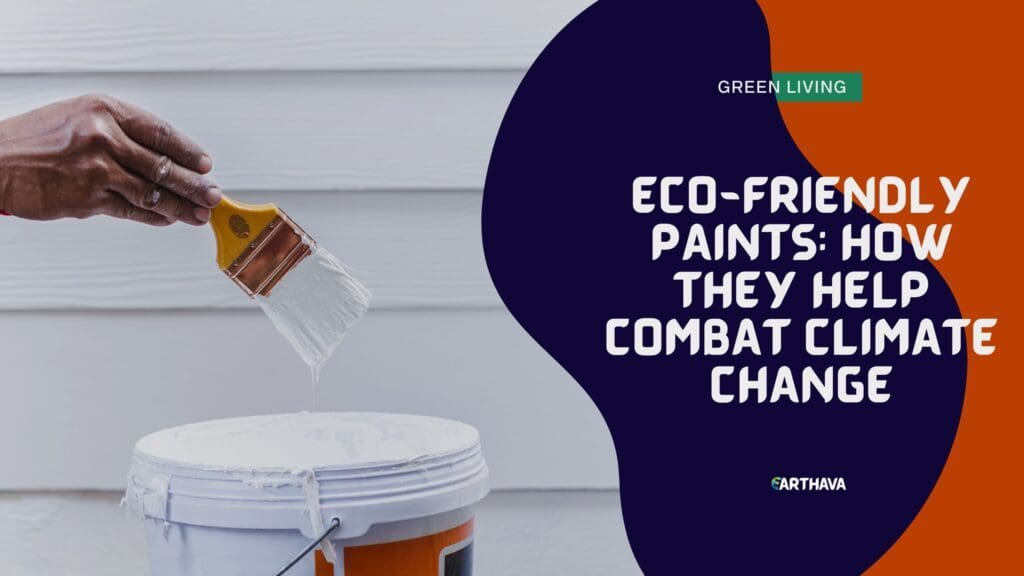A growing number of paint manufacturers have made a united effort to minimize the negative impact of chemicals on the environment and health. What the difference between conventional and eco-friendly paints is, what chemicals pose the greatest threat to the environment and health, and what types of eco-friendly paints can be found on the market is the topic of the article.

Conventional Paints
Conventional paints consist of four types of materials: solvents, binders, pigments, and additives. Even though all of these materials can contain toxic substances, VOCs (volatile organic compounds) found in solvents have the most damaging impact on the environment and our health.
Conventional paints can be grouped into oil-based and water-based paints. Oil-based paints contain the highest percentage of VOCs. Finally, one liter of conventional paint can result in up to 30 liters of toxic waste.
What are VOCs?
VOCs are chemicals that contain carbon and which are emitted from paints. When it comes to the environment, VOCs contribute to climate change as they react with oxygen in the air producing ozone.
Furthermore, long- and short-term exposure to breathing VOCs can cause harm to your health. Some of the VOCs are human carcinogens. Examples of VOCs include benzene, formaldehyde, toluene, xylene, styrene, and perchloroethylene.
Eco-friendly paint
A brief overview of conventional paints was needed in order for you to better understand why eco-friendly paints are the best option. Generally speaking, environmentally friendly paints do not contain toxic chemicals (or contain them in the lowest amounts), which are harmful to the environment and health. The regulation of what goes into eco-friendly products is needed.
Regulations
The Good Environmental Choice Australia, an independent and non-profit Eco-labelling program is the only Australian member of the Global Eco-labelling Network. According to their Environmental Performance Standard, some chemicals must not be used in the manufacturing of paints and there are limits that must not be exceeded for a paint to be labeled eco-friendly.
To put it simply, eco-friendly paints must not contain or be manufactured using formaldehyde, phthalates, isoaliphates, 1.3 butadiene, bisphenol A, toluene and toluene compounds, crystalline quartz silica, alkylphenolic compounds, heavy metals or biocides.
Types of Eco-friendly paints
Knowing that our goal here is to find the best interior paint, let’s learn something about the types of eco-friendly ones. There are three common types of non-toxic paints: natural paints, zero-VOC, and low-VOC paints. Natural paints are manufactured using the following ingredients: water, plant oils and resins, milk casein, natural latex, bees’ wax, plant, earth, and mineral dyes, essential oils, and natural minerals including clay, chalk, and talcum. They can be water- and oil-based.
Water-based paints do not give off a smell, while oil-based ones contain essential oils. Paints that contain a minimal percentage of VOCs can be called zero-VOC paints. A zero-VOC paint has fewer than 5 grams per liter of VOCs.
Low-VOC paints have less than 50 grams per liter of VOCs. These types of paints use water as a solvent. The levels of harmful chemicals are significantly lowered.
Benefits of Eco-friendly paints
Eco-friendly paints do not pose a threat to health, especially to people with allergies and chemical sensitivities, nor to the environment. They provide easy clean-up and disposal.
There is no odor, or the odor is minimized. The quality of Eco-friendly paints is the same as the quality of conventional paints. You can expect good coverage, hideability, and scrubbability. Every one of us should strive towards a cleaner planet. Starting with eco-friendly paints is a good beginning.


